Framing Statement
Skin Deep(er) is a performance art piece rooted into the Usher Gallery space. 5 artists display personas,which personally resonate with the performer. Through the act of dressing and undressing, the performers ‘put on’ their personas, and then for a short time, create an enclosure for their ‘human zoo’ in which they live. In their enclosure the performers live as personas, and invited audience members to interact with them and observe them existing. During this time of interaction, audience member may be handed envelopes which contain personal confessions from the artist which go further in understanding their persona.Heavily influenced by La Poche Nostra’s work and their exploration of identity and persona, and exploring aspects of Brett Bailey’s Exhibit B and Marina Abramovics work with the body , the piece aims to ask audience members to interact with personas they may not usually come across and think about how society can change people to be a certain way.
The Performance has a duration of one hour, which consists of the 3o minute performance repeated. It is performed in The Usher Gallery and encourages any gallery goers in the room to interact with the personas, observe them, and perhaps recieve an element of the performance to take away and therefore become an extremely interesting part of the performance.
Marketing Text
Fetishised, Masculine, Meditative, Rebellious, Queer.
Five bodies used to explore their own identities and those imposed upon them.We invite you to come and observe this silent piece of performative art.
This performance contains partial nudity.
Analysis of Process
From the first moment, we explored the Usher Gallery and the Collection, I knew I wanted to do a piece that focused on people and human identity. I did not feel the bodies in the gallery represented an accurate selection of real people and what real people really looked like. The majority of pieces depicted white women in extremely good shape, or extremely muscular white men and I wanted to celebrate a greater diversity in artwork.When discussing our initial interests with the class, I formed a group with 4 others who had a similar outlook to myself. Early on in the creation process, we discovered Marina Abramovic’s work, which we were struck with. Having watched Abramovic’s ‘The Artist is Present’ we immediately knew that our own bodies on display would be a key aspect of the piece, and her ability to bare herself so openly was captivating. From her pieces ‘Rhythm O’ and ‘The Artist is Present’, we considered the idea of the audience interacting with us, and making them an integral part of our performance.
In a period of ‘play’ and exploration rehearsal, we had the idea of being shown clothed and unclothed, and wonder if how we looked and what we wore would influence people’s opinions about us as people.
One of our initial ideas, heavily influenced by Marina Abramovic and ideas of the human body as shown in galleries, was a relatively simple one. Bodies on show, in various manifestations, eg. clothed, unclothed etc.The outfits would change as we changed shifts. Blindfolded, still and watched by the gallery audience. Our original idea was for there to be forms or surveys that were filled out in order for the spectators to infer information about the people in front of them. The forms asked questions of sexuality, morality and more. we would stand for durational periods and be observed as Art. We felt that in the context of a gallery, people would look upon us differently, and not just see four people standing there but observe our bodies. We hoped that a realization would come that we were not the usual kind of bodies shown in a gallery, and that difference would be celebrated.
As we continued on our rehearsal process, we were advised to observe Brett Bailey’s ‘Exhibit B’, is a piece that displays black bodies in which “Spectators enter the site-specific location one-by-one and travel through the rooms of the exhibition. The performers, trapped in tableaux vivants, stare back.”(Bailey, 2015) Although a piece more rooted in racial identity than the kind of identity we wanted to explore, it was an extremely interesting and influential piece. From the descriptions of ‘Exhibit B’, we realised that eye-contact with the spectator can be extremely important and tell a story, so we decided to dismiss the idea of being blind-folded during our piece.
Photographer: Emma Jones
With our new found eye-contact in our piece, we reviewed the concept of our ‘forms’ that spectactors would fill in. From watching videos of live art and experimenting in the gallery ourselves we realised that it can be difficult enough to even get spectactors to approach the ‘performers’ so it would probably be extremely difficult to get audience members to fill in a fairly mundane and boring task of filling in a form. We decided to scrap the entire concept of forms and focus on concentrating our personas to make them stronger for the spectators. Our main influence for this aspect of the performance became La Poche Nostra
“We become the spectacle of our identities using our highly decorated bodies. In this sense we are always, physically, culturally and technologically hybrid beings.” (The Pocha Nostra Manifesto, 2012)
We were introduced to La Pocha Nostra and they have really influenced our piece and the way we are creating work. We are interested in creating personas and the idea of a human zoo. All the members in our group have felt like an outsider at some point or someone on the fringes of society, and this is something that La Pocha Nostra focuses on.
La Pocha Nostra are a trans-disciplinary arts organization founded in 1993 by Guillermo Gómez-Peña. They are focused on breaking down boundaries between national borders, and working with artists from all genders, sexualities , races and ages to create groups of rebel artists.
Their book ‘Exercises for Rebel Artists: Radical performance pedagogy’ is filled with numerous exercises to create and explore personas. They had valuable exercises to do either individually or as part of the group as a whole. We employed many of these during our rehearsal period. One exercise for example was to pick another artist in the group and embody their persona. This involved swapping certain items of clothing that embodied the personas and performing each others personas in the Gallery space. We found this very useful as we could look at our own personas from anothers perspective. It showed us how clear or unclear our performance personas are, and what we needed to improve with them.
Another exercise from La Pocha Nostras book we used was a more personal questioning process. The room was turned into a sliding scale, 1 at one end and 10 at the other to represent strongly agree or disagree. The performers were then asked questions such as ” How culturally diverse are you?” or “How sexually liberated do you feel?” and they stood in the relevant position in the room. This helped to either confirm or deny aspects of our personas and was especially interesting to see how divided or united we were on certain points.
I feel that La Pocha Nostra have helped to push us as artists further. We are have been made to question authority and especially to get angry. Ranting and expressing our anger about global issues can really help.From this point onward, a lot of exploration was La Pocha Nostra based, although we did look into other performance artists, such as Annie Sprinkle. Her performance of ‘A Public Cervix Announcement’ and ‘The Legend of the Ancient Sacred Prostitute’ could be very helpful to our performer Natalie who was playing ‘The Fetished Body’ and incorporated sex toys into her final performance.
At this stage in the process, we had solidified each of our 5 personas, which we eventually named ‘The Masculine Body’, ‘The Rebellious Body’, ‘The Queer Body’, ‘The Meditative Body’ and ‘The Fetishied Body’. We had deliberated with different names previously but decided these sounded best. La Pocha Nostra include similar names in their pieces and we felt inspired to create our own titles, which we could always feed back to. These were pieces of our real identity, which we wished to show in the performance in an exaggerated manner. For some of the performers, this was a persona which we showed everyday, whereas for other performers their personas were subverted identities than their everyday identity.
We decided that during our 30 minute piece, we would start in our underwear and ritually put each item of our clothing, putting on our identity. This took some rehearsal as some items of clothing were difficult to put on easily. Once fully dressed, we decided we would force another performer into a tableau which summed up their persona.
We experimented with a few different positions, and also considered how effective to the spectator the tableau would be. After posing in our tableau and manipulating the other bodies, we decided we would go into a period of ‘living’ much like a ‘human zoo’, we felt it would have more of an impact if we weren’t just standing static, and in fact if we created a small ‘enclosure’. So in the last few weeks of the rehearsal process, we decided that we would create our own tiny areas and ‘live’ as our personas in them for a while.
We spent time collecting a number of artifacts that showed our personas clearly, all of which were items we already owned and had in our possession so this made it a lot more personal. In the pictures below you can see the items that I debated using in my box, some of which were eventually included. Some objects such as the records, I decided not to use, because although they were relevant to my persona, they did not actually belong to me and therefore meant if used, it lacked a personal touch. I wanted to audience to understand that I had a personal connection with all the items in the box. I felt it had more impact if every item we had in our boxes was a genuine part of our lives.
Possible items for my persona’s box. Photographer: Emma Jones
During rehearsal, we played around with what to do in our enclosures, but mostly we acted appropriately to our personas. I listened to music loudly on my iPod, and read through metal magazines, whilst ‘The Masculine Body’ for example, shaved, and applied aftershave. We spent periods of time observing each other in these ways so we could tell each other whether it looked too forced or unnatural.
For the dress rehearsal in the gallery space, we decided to put all our possessions that were shown in the performance in matching boxes, and during the piece, take our possessions out to create the enclosure around us. This made the entire performance much neater and united us better as one piece. We rehearsed our piece a few times in the space, but discovered a problem with manipulating each others bodies in the space.When we first did this manipulation of the bodies, it was a gentle action, guiding the performer into their pose. However during the dress rehearsal, we realised that in fact this gentle method looked weak, and if we were rougher it was a stronger metaphor for feeling as if we were forced into our personas. The final aspect of performance that we decided upon, was creating note card confessions which we would give out to audience members but only if they chose to interact with directly.These would contain quotes, secrets, and confessions from us, that would reveal information about our performance personas.
Our note card confessions . Photographer: Emma Jones
Performance Evaluation
Our final performance lasted for 60 minutes, which was a 30 minute performance repeated. Starting around 1pm, we began in our underwear stood around the room, once the audience members had filed into the room, we began putting on items of clothing one at a time with blank staring expressions. This was timed so we did it at the same time on one of our performers Will command, who was wearing a watch. Once all the performers were fully dressed, starting from ‘The Masculine Body’ one at a time, the performer moved the next person into their final tableau, like a chain reaction. Once that had finished, we all knelt and one by one began taking our items out the boxes and carefully and lovingly laying them around us, to create our own enclosures.
My final performance box. Photographer: Fenia Kotsopoulou
Once set up, we would begin to fully embody our personas, and finally began looking around the spectactors. I listened to my ipod and read Metal Hammer magazines, but after a short while, I looked around and with my eyes invited them over to choose a song to listen to. Once they chose a song to listen to, we would sit side by side and enjoy the song. With one audience member, I encouraged them to help me change one of my facial piercings, the audience member agreed and we engaged in this very personal act, which involved a level of trust. I was also pleased that a few audience members did take our note card confessions but did not read them straight away. I actually found this extremely positive as when the audience members did read our confessions, it would be more private moment and the performance somehow continued through them understanding more about it.
Interaction with an audience member during performance. Photographer:Fenia Kotsopoulou
I did this twice with the few spectators who felt confident enough to approach. I was pleasantly surprised that audience members were willing to interact with me in that way as I had concerns that audience members would feel too nervous to do so.However I do feel some of my success in encouraging interact was my closeness to the door in which many of the audience members stood and observed from. Unfortunately audience members sat down by the door blocking others from entering further and this was not something we had anticipated. For this reason, some of the performers further away had less interaction, because I feel audience members may have felt afraid to cross the performance area for fear of ‘ruining’ or ‘disturbing’ the piece. Once we finished interacting as our personas, we slowly packed our possessions back into our boxes, stood up and slowly took our items of clothing off until we were back in our underwear. We put the clothing on in the exact same order as we had taken them off at the start of the piece in order to show the cyclical nature of putting on our persona, and to show that this is something that doesn’t really ever have an end.
If we did the piece again, we would encourage audience member to gather in the centre of the room instead via signs. This would also mean that the spectactors could examine the detail of all the performers enclosures in much greater detail. I was happy with the amount of audience members we had which changed between a single spectator to around 10 audience members. If done again, I was have ensure the door stayed open to help encourage audience members to flow in and out with more ease.
In terms of improving the final performance, I think I would simply have rehearsed the dressing and tableau section more times in order for us to be slicker and even more in time. There were sections where we we were a tiny bit out of time, and this lost a tiny bit of impact in my opinion. I would have also made sure I was more diligent in noticing when the duration of the performed persona section had ended, and I took a little longer than the other performers to start packing away my box. I do feel that the performance was a success as all of the performers in the group, including myself were extremely emotionally invested in the piece and we performed a very personal part of ourselves.So although an audience certainly enhanced the experience, it was a cathartic experience in itself.
Final Performance. Photographer:Fenia Kotsopoulou
Work Cited
Picture from: http://lapochanostralivearchive.tumblr.com/post/47826895518/corpo-insurrecto-3-0-the-robo-proletariat-pai
Bailey, B. (2015). EXHIBIT A B and C | Third World Bun Fight. [online] Thirdworldbunfight.co.za. Available at: http://www.thirdworldbunfight.co.za/productions/exhibit-a-b-and-c.html [Accessed 11 May 2015].
Jones, E. (2015) Site Specific (The Collection and the Usher Gallery)
Kotsopoulou, F. (2015) Site Specific (The Collection and Usher Gallery).
Gómez-Peña, G. and Sifuentes, R. (2011). Exercises for rebel artists. London: Routledge.
Sprinkle, A. (2015). Masturbating Onstage | ANNIESPRINKLE.ORG(ASM). [online] Anniesprinkle.org. Available at: http://anniesprinkle.org/masturbating-onstage/ [Accessed 11 May 2015].
The Pocha Nostra Manifesto [online article] Available from http://www.pochanostra.com/[Accessed 29 March 2015]
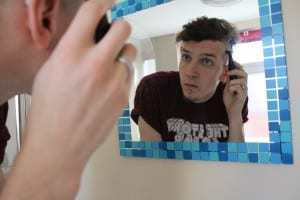

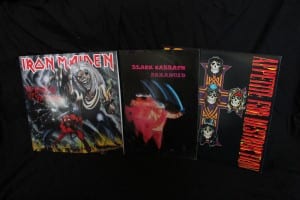
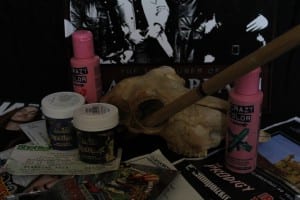

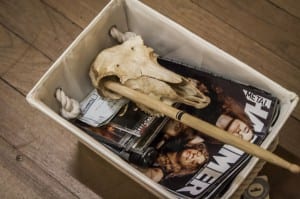
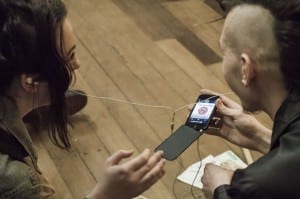
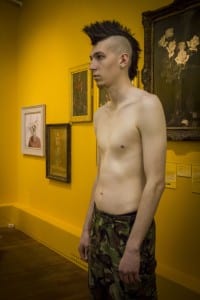
Recent Comments